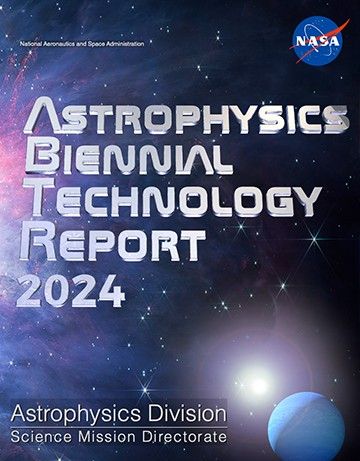The science missions of the Astrophysics Division are enabled by technologies developed through the following programs: Cosmic Origins (COR), Physics of the Cosmos (PhysCOS), Exoplanet Exploration (EXEP), and the Astrophysics Research Program. PhysCOS, COR, and EXEP develop and operate the Division’s science missions, and each conduct technology development activities to enable future missions and to support early phase mission development. The Astrophysics Research Program competitively solicits low Technology Readiness Level (1-3) development activities of a more general nature.
Annual assessments that identify future technology development needs, input from various advisory groups, and the Astronomy and Astrophysics Decadal Survey help the Astrophysics Division plan future science missions and identify the technology development necessary to enable those missions.
Technology efforts are procured through both directed and competed processes, which are conducted through Research Opportunities in Space and Earth Science (ROSES).
About NASA Astrophysics Science Programs
NASA’s Astrophysics Division undertakes spaceflight missions to explore the nature of the universe at its largest scales, its earliest moments, and its most extreme conditions; missions that study how galaxies and stars formed and evolved to shape the universe we see today; and missions that seek out and characterize planets and planetary systems orbiting other stars. Since such ambitious missions require technologies that exceed today's state of the art, APD established the Strategic Astrophysics Technology (SAT) program to mature key technologies' Technology Readiness Level (TRL) to enable these future missions, from demonstrated feasibility, (i.e., TRL 3), to the point where they can be incorporated into NASA flight missions (i.e., TRL 6).
Astrophysics Technology Development
The Program Offices serve the critical function of developing concepts and technologies for strategic missions and facilitating science investigations derived from them, specifically:
- Assess and prioritize technology gaps, collecting inputs from the community and technology activities.
- Manage projects that mature technologies for strategic missions from initial TRLs of 3, 4, or 5.
- Promote infusion of technologies into missions and projects.
- Conduct mission studies and develop mission concepts to enable future scientific discoveries.
- Communicate progress to and coordinate with the scientific community.
- Inform the general public about progress achieved by the Programs (see searchable database of Astrophysics technology development projects).

Astrophysics Technology Development Portfolio (Technology Database)
This database is updated annually and indexes technology development projects funded by the NASA Astrophysics Division. The portfolio includes information about the Strategic Astrophysics Technology (SAT), Astrophysics Research and Analysis (APRA), and Roman Technology Fellowship (RTF) projects, along with other competed and direct-funded technology projects.

2024 Astrophysics Biennial Technology Report (ABTR)
This is the third ABTR, presenting joint technology reporting from the three Astrophysics science-theme-focused Program Offices -- Physics of the Cosmos (PhysCOS), Cosmic Origins (COR), and Exoplanet Exploration Program (ExEP).

2024 Astrophysics Technology Update (ATU)
This first Astrophysics Technology Update (ATU) highlights 12 examples of developments in technology maturation projects, from early 2022 to date, funded by NASA’s Astrophysics Division.

Technology Gap Submission Form
The Program Office solicits community input on gaps between the current state of the art and technology needed for the strategic missions of the coming decades to achieve science goals. The next prioritization is expected to take place in 2026.
Technology Gap Submission Form
The Program Office solicits community input on gaps between the current state of the art and technology needed for the strategic missions of the coming decades to achieve science goals. The next prioritization is expected to take place in 2026.




























